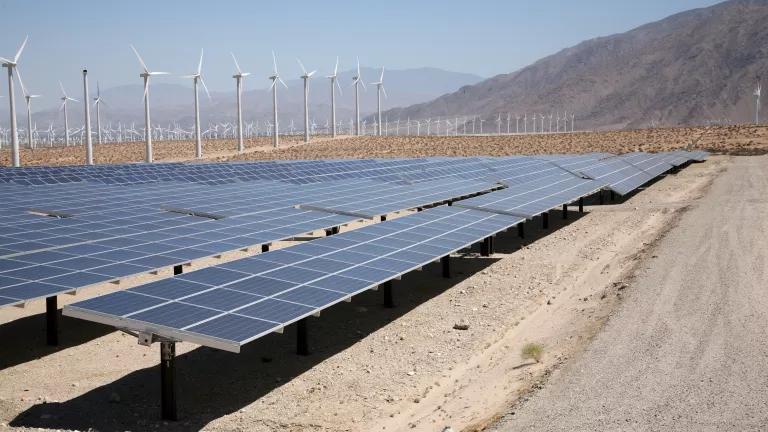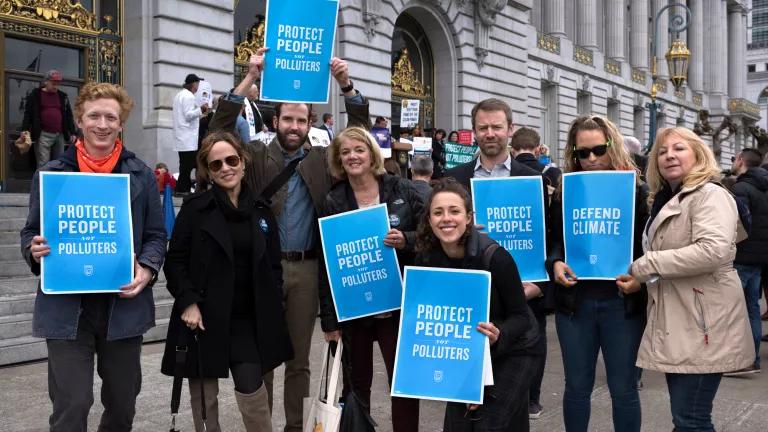California Legislation Takes Aim at the Climate Crisis
California has an opportunity to build on its climate leadership by passing the California Climate Crisis Act. The bill codifies our state’s commitment to achieving net zero carbon emissions as soon as possible and by no later than 2045, and to maintaining net negative greenhouse gas emissions every year thereafter.

Solar Panels and Wind Turbines Near Palm Springs
California has an opportunity to build on its climate leadership by passing the California Climate Crisis Act, Assembly Bill 1395, by Assembly Members Muratsuchi and C. Garcia and several co-authors. The bill codifies our state’s commitment to achieving net zero carbon emissions as soon as possible and by no later than 2045, and to maintaining net negative greenhouse gas emissions every year thereafter.
California has every reason to take the lead in reducing carbon emissions to help avert the worst impacts of climate change. The state is on the front lines of the climate crisis. We are already experiencing the deadly, destructive impacts of crippling drought, devastating wildfires, and extreme heat. This legislation, which passed the Assembly and is awaiting action in the Senate Appropriations committee, meets the urgency of the moment. It directs the California Air Resources Board to identify and recommend actions to turn the state’s ambitious climate goals into reality.
AB 1395 will require steep reductions in greenhouse gas emissions—90 percent from 1990 levels by 2045—and accelerate efforts to reduce the burning of fossil fuels, which will also improve air quality and improve public health. In addition, the bill supports the use of nature-based solutions—enhancing the use of natural lands as carbon sinks. AB 1395 would set concrete, achievable goals and put in place mechanisms to work toward those goals while monitoring actual results and providing for accountability and public transparency.

Photo by Tyler Butler
The goals in AB 1395 were first established in the executive order signed by former Gov. Jerry Brown. This order called for reaching carbon neutrality by 2045 and stated, “All policies and programs undertaken to achieve carbon neutrality shall seek to improve air quality and support the health and economic resiliency of urban and rural communities, particularly low-income and disadvantaged communities.” Governor Newsom affirmed and built on Brown’s executive order with his July 9 letter to the Air Resources Board requesting that it evaluate how to achieve carbon neutrality even sooner, by 2035, as part of its 2022 Climate Change Scoping Plan.
AB 1395 directs the Air Resources Board to identify a range of approaches to meet these ambitious goals—including carbon dioxide removal and carbon capture and storage technologies, which can, on occasion, be useful additions to climate policy so long as they do not expand or prolong fossil fuel use. It balances concerns and opportunities by requiring the Air Resources Board to consider both the potential benefits and risks of these technologies, include robust monitoring and reporting, and to ensure that there are no adverse impacts to local air quality. This is the right approach given the urgency of the crisis—we need to consider every viable option to reduce emissions quickly, safely and affordably.
NRDC and our partners call on the state senate to pass, and Governor Newsom to sign, AB 1395 without delay.



